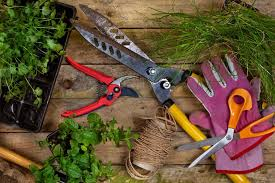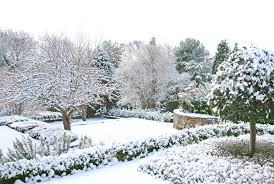As autumn settles in and the colder months approach, gardeners may feel the urge to rest, but there’s still plenty to do. Preparing your garden for winter not only ensures it survives the harsh conditions, but also sets the stage for a thriving spring. Below are essential tasks to help you prepare.
1. Clear Dead, Dying, and Diseased Plants
Leaving dead plants in place may seem convenient, but it creates an ideal environment for pests like slugs, snails, and overwintering insects. By removing dead foliage, you reduce the risk of pests returning in the spring to feast on your new seedlings. The open soil left behind can also be naturally managed by birds and predators.
Most plant debris can be composted, transforming this season’s waste into nutrient-rich organic matter for next year’s growth. However, diseased plants—such as those affected by blight or clubroot—should be promptly disposed of. Municipal green waste collections are ideal as they use high temperatures to break down these materials safely. Alternatively, burning them at home is another effective method.

2. Tackle Perennial Weeds and Invasive Plants
Now is the time to dig up, pull, or chop perennial weeds like ivy, dandelions, and self-seeding plants like poppies. Removing their roots and stems weakens the plants and reduces their ability to regrow next season. This simple step can prevent future garden challenges. Be sure not to compost these weeds, as they can spread in your compost pile. Instead, consider burning them.
Though it’s important to clear away most unwanted plants, don’t aim for total tidiness. Leaving some areas for overwintering predators—like a bug hotel—helps manage pest populations. Additionally, allowing certain crops to stay in the ground can offer early nectar for pollinators in spring or provide seeds for birds.

3. Use Wood Ash from Burnt Garden Waste
Burning garden waste that cannot be composted or repurposed is not only an effective disposal method but also produces valuable wood ash. This ash, rich in potassium (potash), can be used to improve soil health. It’s particularly beneficial for fruiting plants like apples, raspberries, and tomatoes. However, use wood ash sparingly, especially if you have acidic soil or are growing brassicas (like cabbages) since it raises soil pH. Ash can also be mixed into your compost to balance out acidic materials such as citrus peel.
4. General Maintenance and Tool Care
Winter is a great time to inspect your garden tools and outbuildings. Fix any loose boards on sheds, tighten door hinges, and check for drafts. Sharpening your tools and applying vegetable oil to the blades and wooden handles will keep them in top shape for next season. Additionally, clean seed trays, pots, and labels to avoid mold and ensure your tools are ready for use in spring.

5. Prepare Your Garden Soil
Once weeds and plants have been cleared, take the opportunity to dig over your garden beds and enrich the soil with compost or organic matter. The cold winter months will naturally break down the material, kill pests, and improve soil structure, making it more fertile and easier to work with in the spring. Freezing and thawing cycles during winter help to break up compacted soil, improving its drainage and texture.
6. Care for Perennials and Overwintering Crops
Pruning fruit trees and bushes now can encourage healthy growth in the spring. Ensure stakes and ties are secure and replace or add new ones as needed to protect plants from wind damage. If you grow crops that will survive through winter, like certain root vegetables or brassicas, check that they are adequately protected. This may include repairing row covers or adding extra protection for frost-sensitive plants.

For plants in pots, move them to sheltered locations to prevent frost damage. Terracotta pots should be raised off the ground and wrapped in insulating materials like bubble wrap to avoid cracking. If you have a cold frame or greenhouse, now is the time to move sensitive plants indoors.
Conclusion
Preparing your garden for winter doesn’t just involve protecting plants from the cold; it’s about setting the foundation for next season’s success. By clearing debris, controlling weeds, maintaining tools, and improving soil, you’ll ensure your garden is ready to thrive when spring arrives. Tackling these tasks now will give you a head start, allowing you to enjoy a healthier, more productive garden in the coming months.
